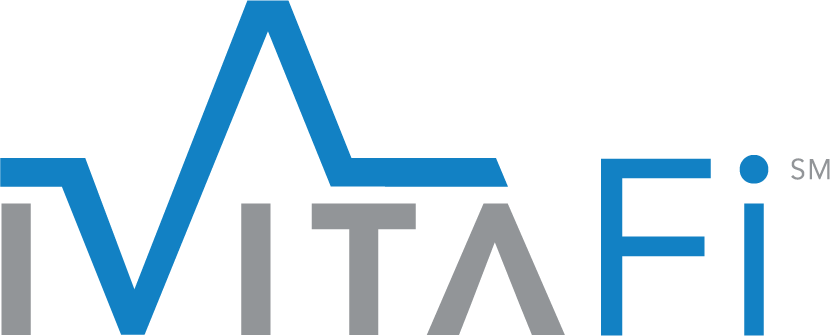The healthcare industry has long faced issues of accessibility, affordability, and convenience for patients. However, the emergence of embedded finance solutions is revolutionizing the way patients interact with and pay for healthcare services. By seamlessly integrating financial services into healthcare platforms and the patient journey, embedded finance significantly enhances accessibility, affordability, and convenience for patients. At the same time, it streamlines operations and boosts revenue collection for healthcare providers, creating a more efficient and effective healthcare system overall.
In-App Payments: Enhancing Convenience
One prominent example of embedded finance in healthcare is integrating payment solutions into healthcare apps. These apps often offer paid subscriptions or other services and integrate embedded finance solutions to provide users with convenient payment options, such as digital wallets and top online payment methods like Apple Pay and PayPal. This seamless integration of financial services into the healthcare experience eliminates the need for patients to navigate multiple platforms, making the payment process more efficient and user-friendly.
Patient Financing Solutions: Improving Affordability
Another key area where embedded finance is making a significant impact is patient financing solutions. Healthcare providers increasingly adopt embedded finance platforms that use data and AI to personalize patient payment strategies, offering fixed 0% interest and fee financing options. These solutions help patients afford necessary treatments by allowing them to pay over time while increasing healthcare providers’ collection rates by up to 50%. By making healthcare more affordable, embedded finance breaks down financial barriers and ensures patients can access the care they need without the added burden of upfront costs.
Embedded Lending: Streamlining the Payment Process
Embedded lending solutions are further transforming the healthcare payment landscape. These solutions allow healthcare providers to embed affordable payment plans from top banks and lenders directly into their payment processes. Patients can apply for financing through their mobile device, provider’s website, or clinic and receive a decision immediately, while the lender pays the provider instantly. This streamlined process eliminates the need for patients to navigate complex financing applications and reduces administrative burdens for healthcare providers.
Embedded Insurance: Enhancing Control and Flexibility
Healthcare insurance platforms also embrace embedded finance by integrating functionality that enables patients to manage claims and other insurance-related tasks online. This integration gives patients more control and flexibility over their insurance coverage, allowing them to access information, submit claims, and make payments through a single platform. By streamlining the insurance process, embedded finance is making it easier for patients to navigate the complexities of healthcare coverage and ensuring they can access the services they need with minimal hassle.
Embedded Banking: Expanding Financial Services
In addition to the solutions mentioned above, some major hospitals and health systems are beginning to offer embedded banking services. These services allow patients to pay medical bills and access other financial services directly through the healthcare provider’s platform, further expanding the available financial options. By integrating banking services into the healthcare experience, embedded finance creates a more comprehensive and convenient financial ecosystem for patients.
Expanding the Impact of Embedded Finance in Healthcare
The impact of embedded finance in healthcare extends beyond the patient experience. It also transforms healthcare providers’ operations, improves efficiency, and enhances financial stability.
Streamlining Administrative Processes
Embedded finance solutions help streamline various administrative processes within healthcare organizations. By automating payment collections, financing applications, and insurance claims management, healthcare providers can reduce the time and resources spent on these tasks. This allows staff to focus more on patient care and less on administrative duties, ultimately leading to a more productive and patient-centered environment.
Enhancing Revenue Cycle Management
Effective revenue cycle management is crucial for healthcare providers’ financial health. Embedded finance solutions contribute to this by increasing payment collections and reducing the time it takes to receive payments. For example, by offering patients flexible payment options and affordable financing plans directly through their platforms, providers can improve their cash flow and reduce the incidence of unpaid bills. This financial stability enables healthcare organizations to invest in better facilities, technologies, and services for their patients.
Empowering Patients with Financial Control
One of the most significant benefits of embedded finance in healthcare is the empowerment it provides to patients. With greater control over their payment and financing options, patients can make informed decisions about their healthcare. They can choose the best payment method for their circumstances, apply for financing without leaving the provider’s platform, and manage their insurance claims efficiently. This financial control can increase patient satisfaction and loyalty, as patients feel more supported and valued by their healthcare providers.
Driving Innovation and Competition
Integrating financial services into healthcare also drives innovation and competition within the industry. As more healthcare providers adopt embedded finance solutions, there is a growing need for advanced technologies and services to support these integrations. This fosters an environment of continuous improvement, where healthcare and fintech companies collaborate to develop cutting-edge solutions that benefit both patients and providers.
The Future of Healthcare: Embedded Finance and Beyond
As the healthcare industry continues to evolve, the role of embedded finance will only grow more critical. By integrating financial services into healthcare platforms, embedded finance makes healthcare more accessible, affordable, and convenient for patients while streamlining operations and improving revenue collection for healthcare providers. As we look to the future, it is clear that integrating financial services into healthcare will be a key driver of innovation and progress in the sector, ultimately leading to better health outcomes for patients and a more efficient and effective healthcare system overall.
About iVitaFi
iVitaFi revolutionizes embedded finance in healthcare by seamlessly integrating a non-recourse patient financing solution into healthcare providers’ existing payment platforms. Here’s how iVitaFi transforms the landscape:
- Integration into Provider Systems: iVitaFi collaborates with industry leaders like RevSpring to integrate non-recourse patient financing directly into healthcare payment platforms, ensuring financing options are readily available at the point of need.
- Incorporation into Patient Experience: By offering non-recourse financing directly within the healthcare provider’s ecosystem, iVitaFi enhances the patient experience, eliminating the need to navigate external financial institutions.
- Customized Financial Solutions: iVitaFi’s non-recourse patient financing provides tailored solutions, including affordable payments and a fixed 0% interest, extended term line of credit for out-of-pocket healthcare expenses.
- Risk Management for Providers: Through non-recourse financing, iVitaFi manages financial risk for healthcare providers, allowing them to offer financing options without assuming liability for patient defaults.
- Seamless Transaction Processing: Transactions facilitated through iVitaFi’s financing solution occur seamlessly within the healthcare provider’s payment ecosystem, streamlining payment processing and reducing administrative burden.
In summary, iVitaFi’s non-recourse patient financing embodies the core principles of embedded finance in healthcare by integrating financial services directly into the provider’s systems, enhancing the patient experience, offering customized solutions, managing risk, and facilitating seamless transactions. This approach benefits patients by improving care access and strengthening healthcare providers’ financial viability and operational efficiency.
For more information, please get in touch with us.
Resources:
https://www.ciopages.com/embedded-finance-in-the-healthcare-industry/?amp=1
https://www.ciopages.com/embedded-finance-in-the-healthcare-industry/?amp=1

